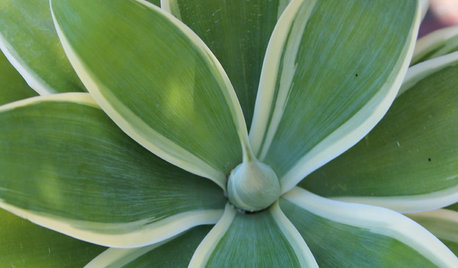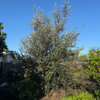Anyone have a rainbarrel system in Northern Calif
kristimama
15 years ago
Related Stories

EXTERIORSWhere Front Yards Collide: Property Lines in Pictures
Some could be twins; others channel the Odd Couple. You may never look at property boundaries the same way again
Full Story
GREEN BUILDINGHow to Harvest Rainwater for Your Garden
Conserve a vital resource and save money by collecting stormwater for irrigation in a barrel or tank
Full Story
SAVING WATER11 Ways to Save Water at Home
Whether you live in a drought-stricken area or just want to help preserve a precious resource, here are things you can do to use less water
Full Story
GARDENING GUIDESGet on a Composting Kick (Hello, Free Fertilizer!)
Quit shelling out for pricey substitutes that aren’t even as good. Here’s how to give your soil the best while lightening your trash load
Full Story
LANDSCAPE DESIGNGet Along With Less Lawn — Ideas to Save Water and Effort
Ditch the mower and lower your water bill while creating a feast for the eyes with diverse plantings and gathering places
Full Story
GARDENING AND LANDSCAPINGGrow a Lush Privacy Screen
No need to wait forever for patio privacy the green way. These 10 ideas will get your screening up and running in no time
Full Story
GARDENING FOR BUTTERFLIES3 Ways Native Plants Make Gardening So Much Better
You probably know about the lower maintenance. But native plants' other benefits go far beyond a little less watering and weeding
Full Story
FIREPLACESRibbons of Fire: 10 Artfully Minimalist Fireplaces
Long and lean and sleek to the core, these gas-burning fireplaces make a powerful contemporary statement
Full Story
INSPIRING GARDENSInside Houzz: A Waterfront Property Ditches the Grass for a Garden
New drought-tolerant plantings and outdoor gathering spaces help this California backyard take in the view without wasting space or water
Full Story
CALIFORNIA GARDENINGCalifornia Gardener's April Checklist
Outsmart droughts with water-savvy plants and sustainable approaches that suit the landscape
Full StorySponsored
Most Skilled Home Improvement Specialists in Franklin County
More Discussions








calistoga_al ca 15 usda 9
kerrican2001
Related Professionals
Fitchburg Landscape Architects & Landscape Designers · Stamford Landscape Contractors · Arlington Landscape Contractors · Canyon Lake Landscape Contractors · Fort Myers Landscape Contractors · Hollywood Landscape Contractors · Munster Landscape Contractors · Oxnard Landscape Contractors · Paterson Landscape Contractors · Rockland Landscape Contractors · South Portland Landscape Contractors · Tamarac Landscape Contractors · The Woodlands Landscape Contractors · White Bear Lake Landscape Contractors · Fishers Window Contractorscaavonldy
Jillberto
mlevie
kristimamaOriginal Author
calistoga_al ca 15 usda 9
ccroulet
gwen_2010
calistoga_al ca 15 usda 9
stanofh 10a Hayward,Ca S.F. bay area
californian
socalgal_gw Zone USDA 10b Sunset 24
kerrican2001
californian
jakkom
Dick_Sonia
riegersteve
hoovb zone 9 sunset 23
ggarner